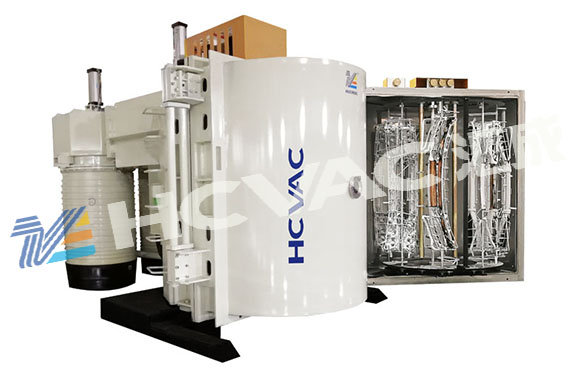From the staff working in the coating industry of
pvd coating machines, I often have friends with various coating problems. The coating technology is professional. When encountering problems, they can check and solve them by themselves. Then those who have just entered the industry soon, Special circumstances during the coating process may be more difficult. The following is a vacuum editor to sort out the common daily coating problems for you, hoping to help you:
1. What is the reason for the difference in adsorption between vacuum evaporation and vacuum sputtering coatings?

Evaporation is adhesion, and sputtering is the strong adsorption of positive and negative electrodes, so the adsorption of sputtering is more uniform, density, hardness and hardness. The price of sputtering is 10%-20% more expensive than that of evaporation.
2. Why can vacuum coating be made into different colors and seven colors?
Because a layer of UV varnish topcoat is sprayed after the vacuum evaporation, different colors can be made on this topcoat. Evaporation can make seven colors by plating some silicides, but it is relatively thin. Layers of different colors of coating to present colorful.
The water electroplating is generally the metal color, and other colors need to be painted with UV topcoat and then UV irradiated.
3. Why can pvd coating be made semi-transparent and non-conductive?
It is not completely non-conductive, using the discontinuity of molecules in the thin film state, metals or metal compounds are conductive, but the conductivity is different. However, when the metal or metal compound is in the state of a thin film, its corresponding physical properties are different. Among conventional coating materials, such as: silver is the metal with the best silver-white effect and conductivity, but when its thickness is less than 5 nanometers, it is non-conductive; the silver-white effect and conductivity of aluminum are slightly worse than silver, but it is not conductive. When the thickness is 0.9 nanometers, it is already conductive. Why is this so? That's because the continuity of silver molecules is not as good as that of aluminum, so its conductivity is worse under the relative film thickness. Our vacuum metallized non-conductive film actually uses the principle of poor molecular continuity of some metals, and controls its thickness within a certain range to make it have a silver-white appearance and high resistance. It can be seen that the effect of the metal non-conductive film is directly related to its film thickness. Only under the corresponding film thickness, a correspondingly stable silver-white non-conductive film can be obtained.
4. Why is the aluminum plating of vacuum coating non-conductive?
Because the coating has a total of three layers, the outermost layer of UV varnish plays the role of curing and wear-resistant insulation after UV irradiation, but once this layer of film is damaged, it will conduct electricity.
During the coating process of the
pvd coating machine, it is inevitable that various coating problems will occur. For example, when cleaning the substrate, if the substrate is not cleaned, or the vacuum chamber leaks, etc., bad coating products will be produced, so master some common coating processing common sense. , is still very necessary.



